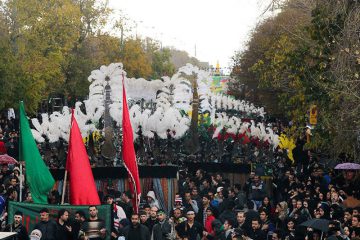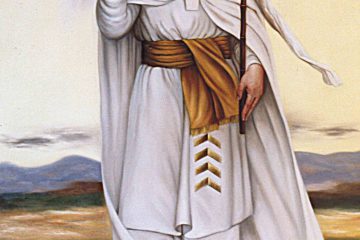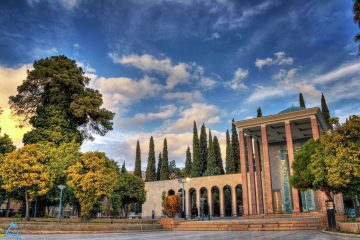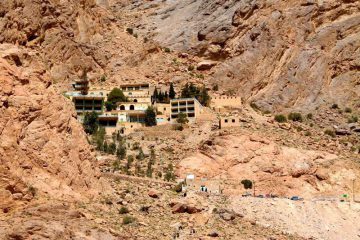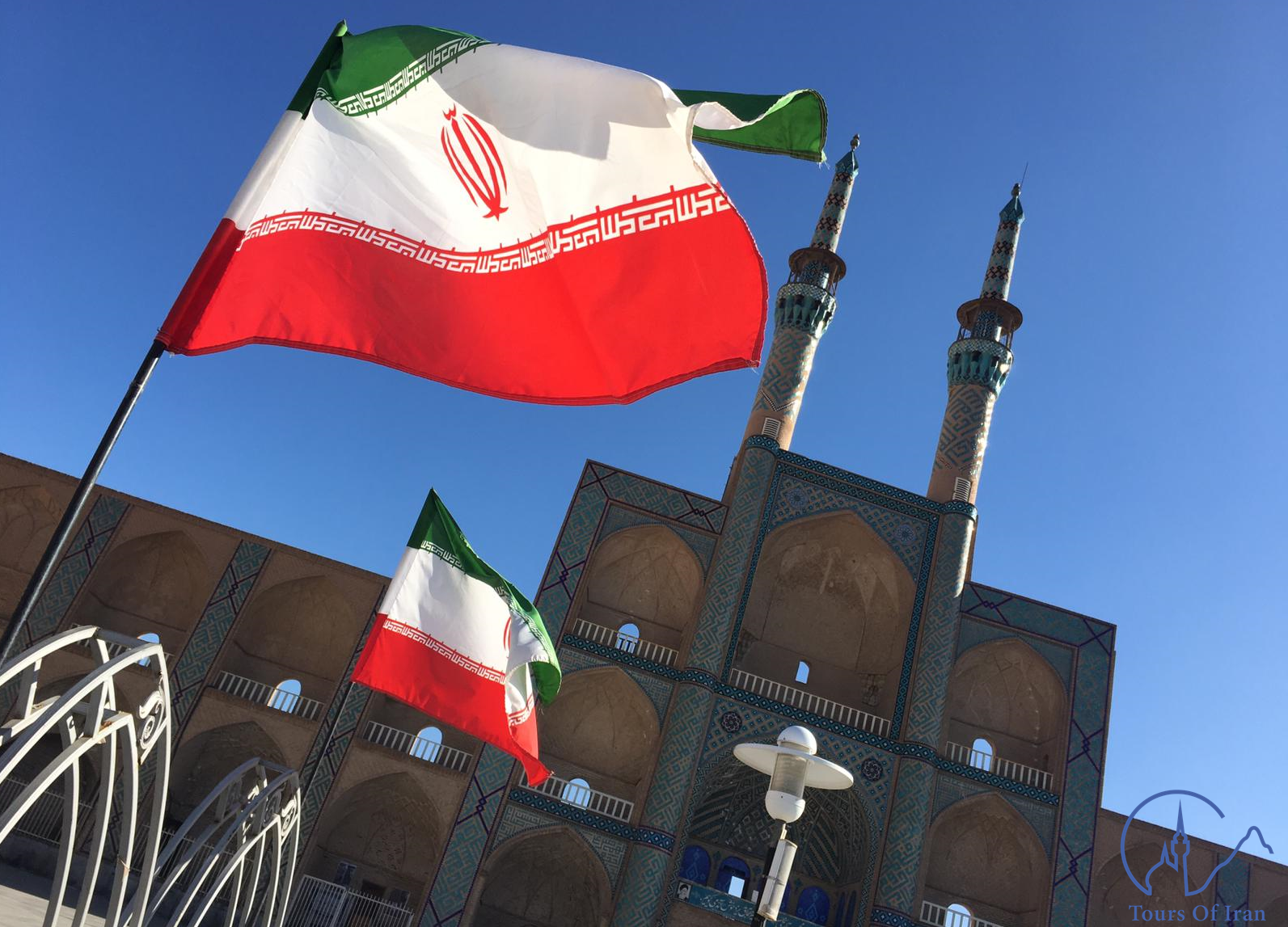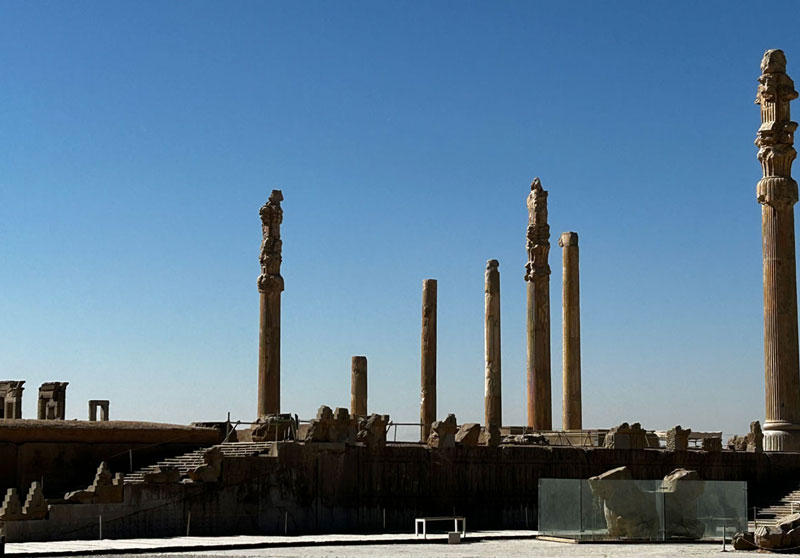
Top 8 Ancient Ruins to Visit in Iran
1. Persepolis:
The first Iran Ancient Ruins: Construction on Persepolis began around 520 B.C. under Darius the Great and continued for 120 years during the rule of other Achaemenid kings. However, it never reached completion. At the time of Alexander’s invasion, Persepolis was still under construction, with the north gate of the palace complex left incomplete—a key clue to its unfinished state.
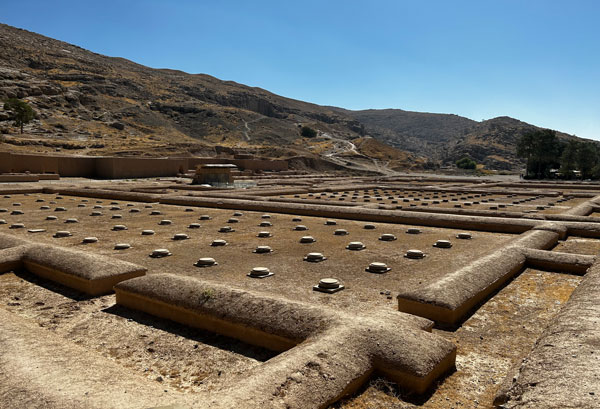
Situated in a wide area, Persepolis is bordered by Rahmat Mountain (Mount of Mercy) on one side and Marvdasht on the other. Covering approximately 135,000 square meters, this massive structure is entirely crafted from stone. The palaces within Persepolis collectively span 125 thousand square meters.
Despite the efforts spanning over a century, Persepolis remained an unfinished masterpiece. Alexander’s invasion interrupted the construction, leaving the north gate incomplete—a lasting symbol of the historical disruption caused by external forces.
In summary, Persepolis, initiated by Darius the Great, remains a testament to ancient craftsmanship. Over 120 years, Achaemenid kings contributed to its construction, but Alexander’s invasion left it frozen in time. The incomplete north gate stands as a silent witness to a chapter in history that remains unfinished. READ MORE
2. Naqsh-e Rustam:
Naqsh-e Rustam, known as The Necropolis, is an Iran Ancient Ruins site located northwest of Persepolis, known as Iran Ancient Ruins. Carved into cliffs, it features rock reliefs from the Achaemenid and Sassanid periods. Serving as the Achaemenid dynasty’s necropolis, it displays four grand tombs with intricate architectural details.
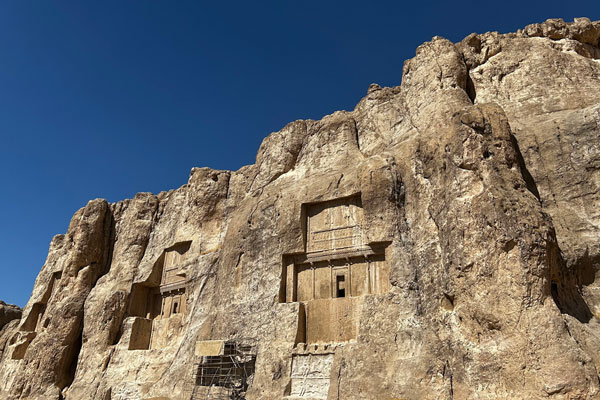
Below, Sassanian kings are depicted in rock reliefs, including a notable scene commemorating the Battle of Edessa. The site’s oldest relief dates back to 1000 BC, portraying a man with unique headgear and believed to be of Elamite origin. Named after the mythical hero Rustam, Naqsh-e Rustam weaves together the stories of ancient civilizations through its captivating rock art.
3. Pasargadae:
Pasargadae, an ancient capital near Shiraz, Iran, was founded by Cyrus the Great and served as the Achaemenid Empire’s seat. It became a UNESCO World Heritage Site as Iran Ancient Ruins. Cyrus initiated its construction in 559–530 BC, but it remained incomplete at his death. The site, covering 1.6 sq km, features Cyrus’s tomb with distinctive steps.
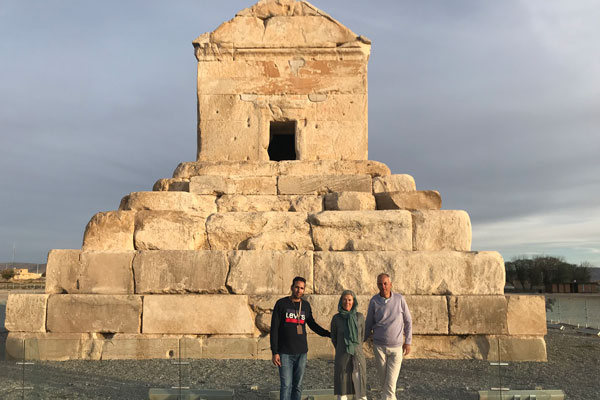
Although its identification is uncertain, Greek historians mention Alexander’s belief in its association with Cyrus. The tomb, influenced by Mesopotamian and Elamite styles, showcases a rosette design. Pasargadae reflects the Persian synthesis of diverse cultural influences from Elam, Babylon, Assyria, and ancient Egypt. The site also includes Persian Gardens, exhibiting early fourfold garden design, and notable structures like the fortress of Toll-e Takht and Gate R, considered the oldest freestanding propylaeum. Pasargadae’s history captures the cultural fusion in ancient Persia during the Achaemenid Empire’s early years.
4. Bishapur:
Next, Iran’s Ancient Ruins is Bishapur, founded by Shapur I after defeating the Roman Emperor Valerian in 266 AD, witnessed prosperity until the tenth century. The city, featuring Sassanid and Islamic-era structures, expanded southward and declined during the 7th-century Arab invasion.
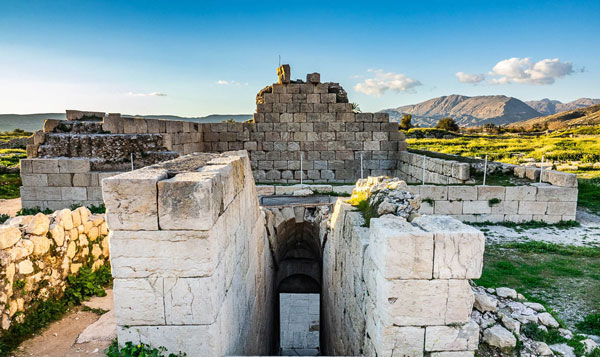
Notable landmarks include Anahita Temple, Valerian Palace, Royal Ceremonial Hall, Mosaic Porch, and Memorial Stone Columns. Bishapur marked a departure from traditional Persian architecture, adopting a Hellenistic grid street plan. Key features include worship spaces like the Anahita Temple, Valerian Palace dedicated to the captured Roman Emperor, and the Royal Ceremonial Hall with a unique dome. The city’s mosaic porch and memorial stone columns add to its historical significance.
5. Takht-e Soleyman:
Takht-e Soleyman, located in West Azarbaijan, Iran, is an Iran Ancient Ruins from the Sasanian Empire. Positioned between Urmia and Hamadan near Takab, approximately 400 km west of Tehran, this fortified site was designated a World Heritage Site in July 2003. Situated on a hill formed by a calcium-rich spring pond, the site includes the remains of Adur Gushnasp, a Zoroastrian fire temple originally built during the Sassanid period. The temple, later partially rebuilt as a mosque in the Ilkhanid period, housed one of the significant “Great Fires” revered by Sassanid rulers during their ascension to the throne.
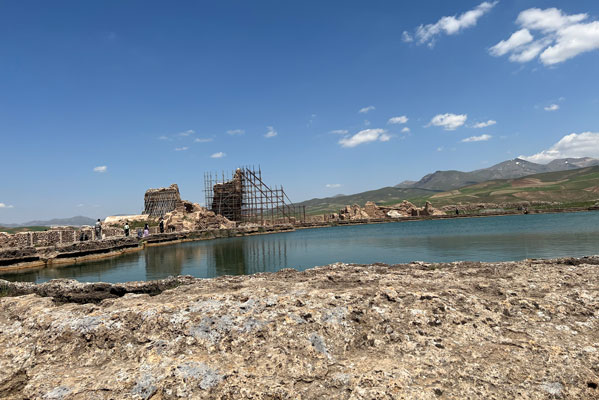
The fire at Takht-e Soleyman, known as Adur Gushnasp, was dedicated to the warrior class of the Sasanid. References to this site appear in a 4th-century Armenian manuscript related to Jesus and Zarathustra, linking it to ancient legends. The 4th-century Peutinger Map also features Takht-e Soleyman. Following the Arab invasion in the 7th century, the site gained its biblical name. According to folklore, King Solomon imprisoned monsters in a nearby 100-meter-deep crater known as Zendan-e Soleyman, translating to the “Prison of Solomon.” Legend also attributes the creation of a flowing pond in the fortress to King Solomon.
Archaeological excavations uncovered evidence of occupation during the Achaemenid and Parthian periods. Coins from the Sassanid kings and the Byzantine emperor Theodosius II (AD 408-450) have been discovered at the site, adding to its historical significance.
6. Bam Citadel:
Bam, a UNESCO World Heritage city, is characterized by a picturesque landscape blending the blue sky, green palm orchards, and earth-colored buildings. Nestled on the southwest edge of Iran’s largest desert plateau, it features an unparalleled citadel atop the highest mount, embodying a rich history intertwined with myth.
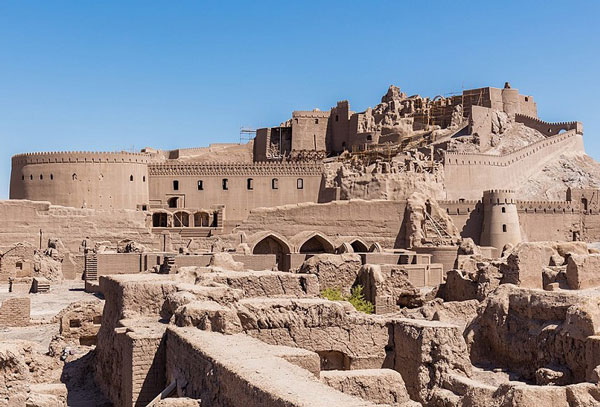
Ferdowsi’s Shahnameh traces Bam’s origins to Kojaran, where the legend of Haftvad and his worm unfolds. The city’s heart, Arg-e Bam, testifies to nine layers of human development, reflecting the grandeur of an ancient civilization. Once a strategic Silk Road hub, Bam thrived in the textile and silk industry, boasting elegant cotton goods from the 10th century.
Built by the Achaemenids around 500 BC, Bam’s citadel stands as the world’s largest adobe structure, showcasing local architectural ingenuity and the Qanats irrigation system. Passed through various empires, the fortress housed thousands, enduring invasions and conflicts.
Abandoned during the Qajar era, the citadel served as a military position until the 1930s. In 2003, a devastating earthquake struck, causing substantial damage. Through international cooperation, the city was reconstructed at 99%, restoring its former glory under the southeast Iranian sun.
7. Shahre Sukhte:
Shahre Sukhte, a remarkable UNESCO site in Sistan and Baluchistan province, lies 56 km from Zabol road to Zahedan. This vast archaeological site, built with mud bricks in the Bronze Age, covers 151 hectares and was one of the largest cities from 3200 to 1800 BC.
The city, discovered in 1967 during the Qajar Dynasty, earned the name “The Burnt City” after a British militant observed its remnants. Associated with the Jiroft culture, one of the world’s oldest civilizations, Shahre Sukhte reflects the transition from village habitation to an urbanized community with notable achievements.
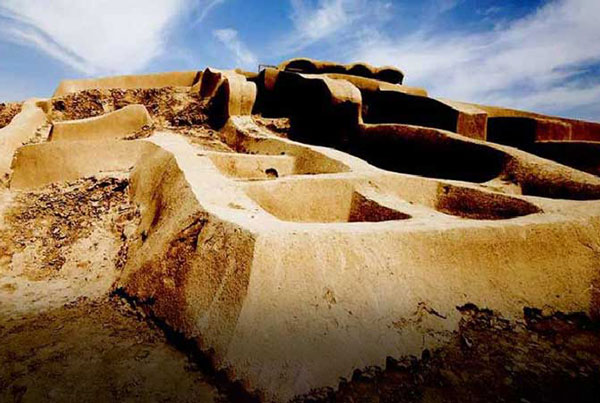
Numerous discoveries highlight the city’s remarkable culture, including a skull with traces of brain surgery, the world’s first animation on a pot depicting a running goat, the oldest backgammon, an artificial eyeball, and the world’s first ruler. Notably, no weapons have been found, suggesting a peaceful nature among residents.
People were buried throughout the site, showcasing the coexistence of different cultures. Beneath ancient graves lies evidence of a unique cultural tradition, trade, and relations with other ancient sites.
The demise of Shahre Sukhte resulted from changes in water courses and climate. Once a humid area with abundant water sources, the diversion of water courses and climate change led to abandonment. The city, never rebuilt after the last fire, remains shrouded in mystery, with the reasons for its rise and fall still unknown.
8. Tchogha Zanbil:
Next Iran’s Ancient Ruins, Once standing proudly near the fertile lands of Mesopotamia, the great kingdom of Elam flourished in the watershed of the river Karun. King Untash-Napirisha built the majestic Chogha Zanbil, known as “DurUntash,” a sacred complex with a towering ziggurat dedicated to the god Inshushinak.
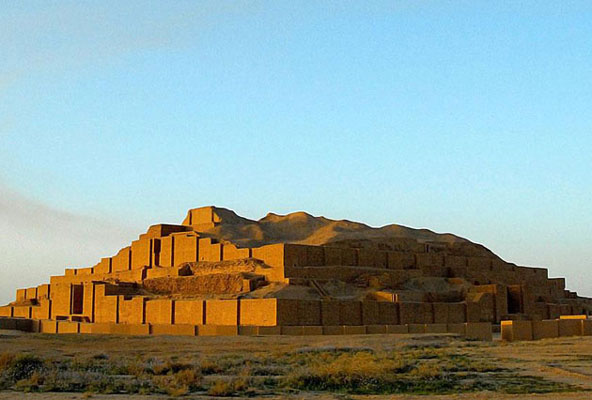
The ziggurat, a pyramidal structure made of mud brick, reached for the sky. Priests, servants, and the royal family resided in this sacred city. The king and queen had a private shrine at the top, offering a breathtaking view of the green valley and palm trees—a gift from the gods.
Sadly, King Untash-Napirisha never saw its completion. His death led to the destruction of the religious city by the Assyrian king Ashurbanipal. Abandoned for centuries, the site faced obscurity under sand until French archaeologist Roman Ghirshman rediscovered it in the late 1940s.
“Tchogha Zanbil” meaning “upside-down basket,” is now recognized as the best-preserved ziggurat globally. Despite half its original size, the ochre and geometrical structure stands over 24 meters high, showcasing Elamite architectural brilliance.
The ziggurat’s unique design with independent foundations on each floor and the discovery of the oldest water treatment system reflect Elamite’s ingenuity. Cuneiform inscriptions warn against harming the temple, hinting at a curse. The Assyrians, who destroyed it, faced consequences as their empire soon vanished. Legends even suggest a curse on the French archaeologist who excavated the site.
Chogha Zanbil remains a testament to Elamite grandeur.
FAQs about Iran’s Rich History and Cultural Tours

